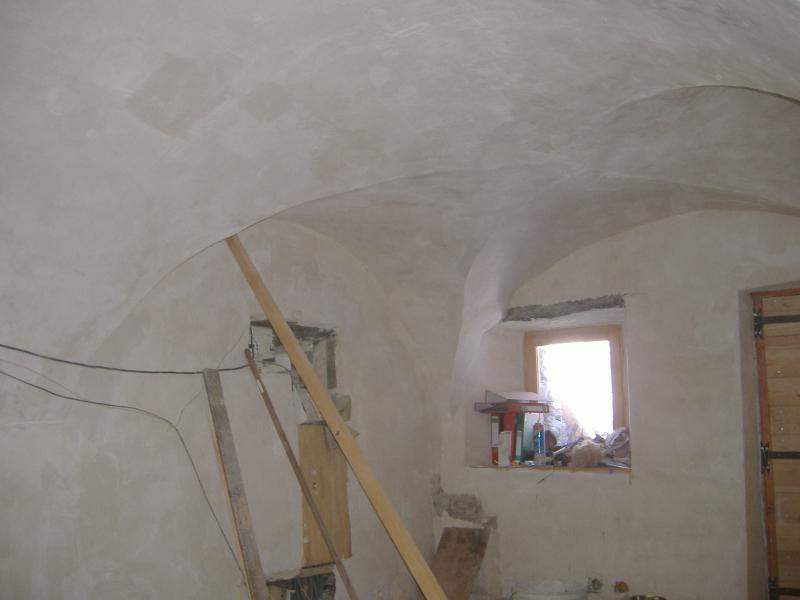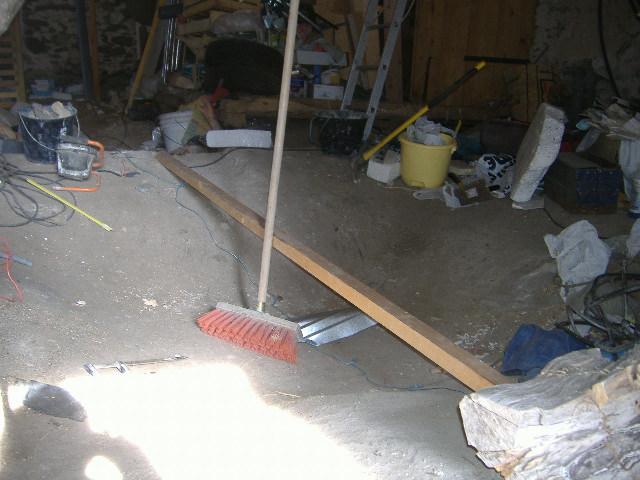- Joined
- 24 Aug 2009
- Messages
- 2,658
- Reaction score
- 279
- Country

Having read another thread about the absolute necessity of sub-floor ventilation, I am a touch queasy and hence my question.
The barn I am renovating has a vaulted stone-ceiling from the stable to the barn above(photo 1). The way this is built means that the original upstairs floor had two lines of deep hollows 2 m across and 40 cm deep ( mirror-image of vaulting below). Three in each line (photo 2).
Since this is the first floor, this is a minimum of 120 cm , max 280 above ground level ( on a steep hillside ).
My joists (50 x 200 - 3 m span) touch the old ceiling and effectively separate the six hollows.
Since I am well above ground, I decided that ventilation would serve no purpose.
Since the heating is UFH , I also decided to fill up the hollows with lots of PSE packaging material that I had been collecting , topped up with fibre-wool.
To paraphrase
1) Ground-floor is heated, with 30 cm thick stone-ceiling
2) Above is unventilated void with up to 40 cm of insulation surrounding
untreated joists
3) Joists do not go into wall but sit on small cast concrete blocks adjoining
walls.
4) Walls are 60 cm stone. Min outside temp -18 C.
5) UFH floor-screed temp above joists likely 30 C, temp in void ????
Have I cocked-up big-time ?
The barn I am renovating has a vaulted stone-ceiling from the stable to the barn above(photo 1). The way this is built means that the original upstairs floor had two lines of deep hollows 2 m across and 40 cm deep ( mirror-image of vaulting below). Three in each line (photo 2).
Since this is the first floor, this is a minimum of 120 cm , max 280 above ground level ( on a steep hillside ).
My joists (50 x 200 - 3 m span) touch the old ceiling and effectively separate the six hollows.
Since I am well above ground, I decided that ventilation would serve no purpose.
Since the heating is UFH , I also decided to fill up the hollows with lots of PSE packaging material that I had been collecting , topped up with fibre-wool.
To paraphrase
1) Ground-floor is heated, with 30 cm thick stone-ceiling
2) Above is unventilated void with up to 40 cm of insulation surrounding
untreated joists
3) Joists do not go into wall but sit on small cast concrete blocks adjoining
walls.
4) Walls are 60 cm stone. Min outside temp -18 C.
5) UFH floor-screed temp above joists likely 30 C, temp in void ????
Have I cocked-up big-time ?



